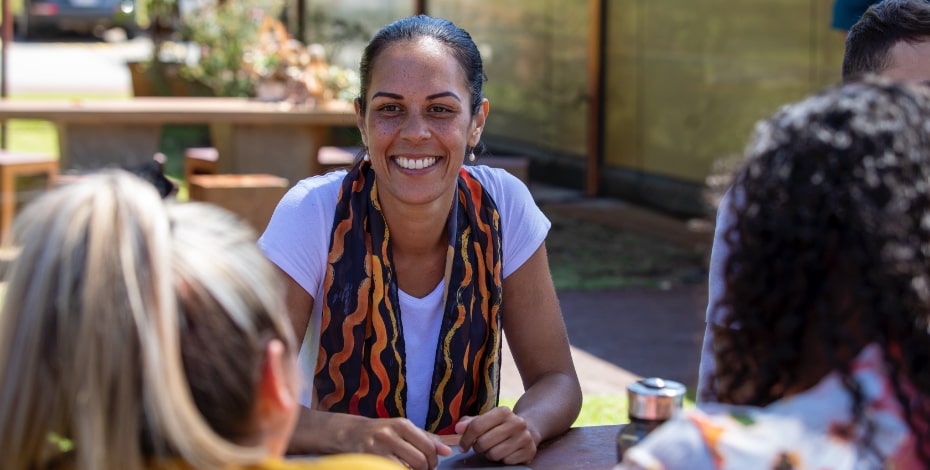
Cultural safety in regulation

The Australian Health Practitioner Regulation Agency and the National Boards, including the Physiotherapy Board of Australia, have introduced cultural safety training for all staff and for Board and Accreditation members.
The Moong-moong-gak cultural safety training program is designed to provide members of the National Scheme with the knowledge, skills and ability to develop and apply culturally safe work practices.
Moong-moong-gak translates as ‘secure, safe’, which aligns with the purpose of the training to ensure a culturally safe health practitioner regulation system that facilitates access to safer healthcare for Aboriginal and Torres Strait Islander communities.
‘Introducing cultural safety training to Ahpra and the National Boards is crucial to enabling personal empowerment and, as a result, promoting more effective service delivery for Aboriginal and Torres Strait Islander Peoples,’ said Physiotherapy Board of Australia Chair Kim Gibson.
The program provides participants with an opportunity to hear and learn from the perspectives of Aboriginal and Torres Strait Islander Peoples, and to reflect on their own behaviours and their conscious and unconscious beliefs.
‘The training requires an open mind and the ability to learn and unlearn,’ Kim said.
‘Participants will be better prepared to engage in culturally safe practices, communication and behaviours in order to contribute to improved health outcomes for Aboriginal and Torres Strait Islander Peoples.
The training was developed by Aboriginal and Torres Strait Islander health and education experts.
It is the first of its kind in the world.
Rollout began in February and will be delivered nationally on a jurisdiction-by-jurisdiction basis until December 2021.
Physiotherapy Board of Australia practitioner member Cherie Hearn has already undertaken the training.
‘The Moong-moong-gak cultural safety training is an opportunity for the Board to reflect on how we can ensure that physiotherapy services are culturally appropriate and safe for Aboriginal and Torres Strait Islander Peoples,’ she said.
‘The training was educational and informative and we had good discussions regarding the history and issues… and how it’s an ongoing commitment to support Aboriginal and Torres Strait Islander Peoples and their health outcomes.’
Ahpra and the National Boards define cultural safety as determined by Aboriginal and Torres Strait Islander individuals, families and communities.
Culturally safe practice requires ongoing critical reflection on health practitioner knowledge, skills, attitudes, practising behaviours and power differentials in delivering safe, accessible and responsive healthcare free of racism.
To ensure culturally safe and respectful practice, health practitioners must:
- acknowledge colonisation and systemic racism and the social, cultural, behavioural and economic factors that impact individual and community health
- acknowledge and address individual racism and their own biases, assumptions, stereotypes and prejudices to provide care that is holistic and free of bias and racism
- recognise the importance of self-determined decision-making, partnership and collaboration in healthcare that is driven by the individual, family and community
- foster a safe working environment through leadership to support the rights and dignity of Aboriginal and Torres Strait Islander people and colleagues.
The Council of Australian Governments’ goal is to deliver healthcare free of racism, which is supported by the National Aboriginal and Torres Strait Islander Health Plan 2013–2023.
The Moong-moong-gak cultural safety training is an important part of delivering the National Scheme’s Aboriginal and Torres Strait Islander Health and Cultural Safety Strategy 2020–2025.
The strategy, which was released in February 2020, is part of the National Scheme’s commitment to eliminating racism and embedding cultural safety in the health system.
© Copyright 2024 by Australian Physiotherapy Association. All rights reserved.





